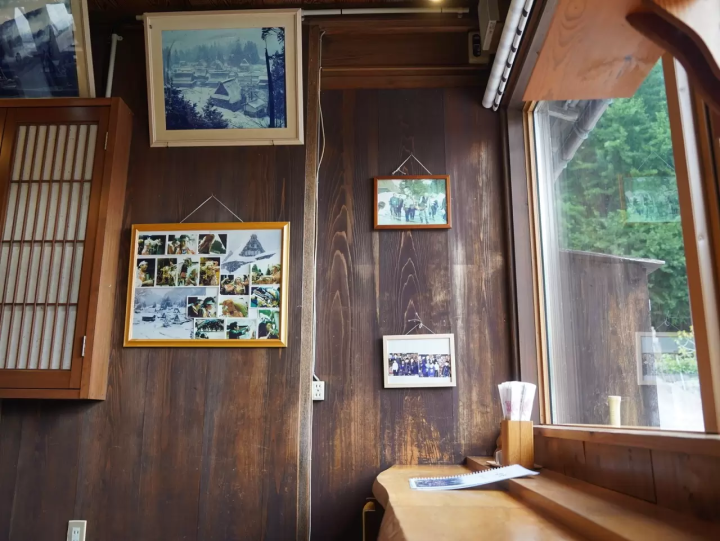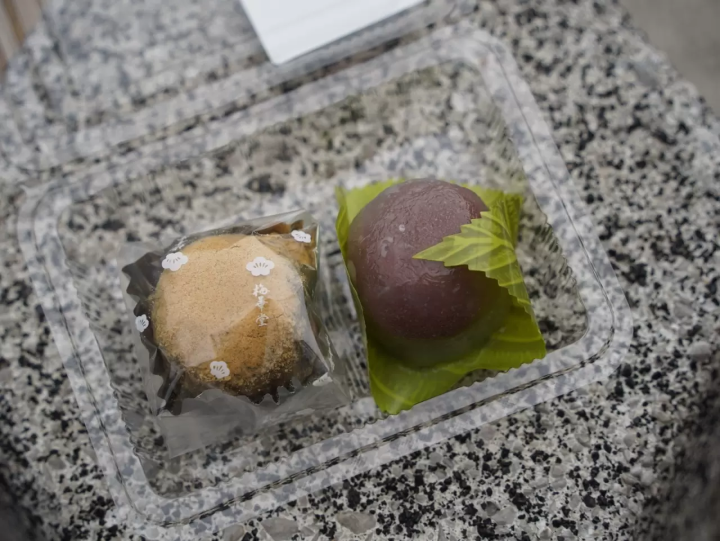Two Gassho-style villages in one day. Takayama → Kanazawa one-way bus trip

From Takayama Station, we head to two famous Gassho-style villages that are World Heritage sites. This is a one-day trip that takes you around Shirakawa-go, Gokayama and Ainokura in half a day, before passing through Johana and finishing in Kanazawa.
Approximately 8 hours and 10 minutes
A comprehensive tour of two World Heritage "Gassho-style Villages"

It's like going back in time.
The spot where you can have such an experience is the World Heritage Site "Shirakawa-go and Gokayama Gassho-style Villages."
The traditional gassho roofs and mountain village scenery rich in nature fascinate people from all over the world.

The main theme of this event is touring World Heritage sites in one day.
We will introduce a model course that starts from Takayama Station, passes through two Gassho-style villages, and ends in Kanazawa.
This is recommended for those who want to visit the spots efficiently in a limited amount of time.

The starting point is JR Takayama Station in Gifu Prefecture.
It is a stopover point for Central Japan Tourism, where the Takayama Line, JR Central Bus, and Nohi Bus connect.
It is the gateway to Kamikochi in the east and Shirakawa-go in the north, and is bustling with tourists from all over the world.


First, we headed to the Nohi Bus ticket booth to head to Shirakawa-go.
There are a wide variety of tickets available, and the staff at the counter will explain everything you need to know.
Buy the ticket that best suits your itinerary.

The three spots on this bus tour are Shirakawa-go, Ainokura, and Joetsu.
I used the Shirakawa-go/Gokayama route ticket, a one-way ticket valid for three days.
This will save you about 600 yen compared to purchasing tickets for each section individually.
Discounted route tickets available here.

The morning trip was so popular that it was nearly full, showing just how popular Shirakawa-go is.
We departed from the terminal bustling with tourists.
10:25 Get off at Shirakawago Bus Terminal


After about 50 minutes, we arrived at the World Heritage Site, Shirakawa-go.
Here we have 1 hour and 20 minutes of free time. We won't go too far into the area, but will enjoy sightseeing around the bus terminal.

A must-visit spot in Shirakawa-go is the Ogimachi Castle Ruins Observatory, located on top of a hill.
It takes about 15 minutes to walk up from the bus terminal, but it's easier if you use the designated shuttle bus.
Since it is a small bus, it may fill up, so it is better to line up early.


Although it was a hot day on the day of the interview, we arrived at the observation deck stress-free.
This is a must-visit viewpoint where you can enjoy the magnificent view of Shirakawa-go.
After taking photos, we got off on foot and enjoyed the traditional village scenery.


Among the rows of houses of various sizes, we decided to explore inside the Wada House, which was the closest.
It is located very close to the shuttle bus stop mentioned earlier.


The inside was spacious with high ceilings, and I was overwhelmed by the imposing construction.
The Gassho style houses were also amazing to see from the inside!

Return to the bus terminal and board the bus to your next destination, Ainokura Village.
Our stay was short, but it was enough to get a feel for the atmosphere.
Shirakawa-go is long and wide, so if you go to the back, it will be difficult to get back.
If you are staying for a short stay, it is smart and recommended to go around the area near the bus terminal.
12:30 Get off at Ainokuraguchi and walk 5 minutes to Ainokura village

We had about three hours of free time to relax in the second Gassho-style village, Ainokura, Gokayama.
The main reason for this is that it is more compact and easier to wander around than Shirakawa-go , there are fewer tourists, and there is almost no waiting time.
Here you will enjoy three things: lunch, sightseeing, and an experience.

First, we visited the museum of "Yusuke," a particularly large Gassho-style house .
This is a spot where you can feel history, combining a private lodge and a museum. (Admission fee: 300 yen for adults)


The museum on the second floor is full of exhibits that allow you to relive the lives of the people of Gokayama.
I am amazed at the affluent lifestyle that has developed uniquely in this remote mountain area.
A must-see for fans of traditional crafts such as sericulture and washi paper making.

After visiting the museum, we went to have lunch at the neighboring tea shop "Matsuya", which is less than a minute's walk away.
In addition to Gokayama's specialties tofu and soba, they also sell a variety of handicrafts.



The menu that makes generous use of local wild vegetables is highly recommended.
The price was reasonable and I was very satisfied.

After lunch, we visited the Gokayama Washi Papermaking Experience Center .
It's a compact settlement, so any spot can be reached within a two-minute walk.


You can experience making washi paper, a traditional craft in Gokayama.
This time, it was a weekday and there were no vacancies, so I was able to participate in the experience without making a reservation.




Of course, the washi paper you create can be used as drawing paper.
It takes just 15 minutes to try it out, and the cost is reasonable at 700 yen.
The building also has a wide selection of washi paper crafts, making it a recommended souvenir shop.


The rest of the time is a leisurely stroll around the village. You can see almost every corner of the village in about 30 minutes.
While I was enjoying taking photos, the time for the bus came quickly.

Walk back to Ainokuraguchi bus stop and board the World Heritage bus.
Our last tourist spot is Johana.
15:55 Get off at Johana Hikiyama Kaikan

If I continued on the bus I could have reached Jōhana Station, but I had about 40 minutes of free time before the bus to Kanazawa arrived.
So I got off at the nearest stop, Johana Hikiyama Kaikan, and walked towards Johana Station.


Just behind the Hikiyama Hall was the impressive gate of Zentoku-ji Temple.
At this point, I started to feel hungry, so I decided to stop by a Japanese sweets shop across from Zentokuji Temple.



It's mostly downhill to Johana Station, so it's an easy walk the whole way.
However, the summer heat made me crave something cold.

The tourist association was selling ice cream, so I couldn't help but buy some.
While waiting for the bus, I enjoyed discovering some unexpected sweets.

Then we warped straight to Kanazawa.
I walked a lot in one day, and before I knew it I had arrived in Kanazawa.
The route ticket is valid up to Takaoka within the section. Depending on your destination, you can also use a route via Takaoka.
17:45 Get off at Kanazawa Station and the whole trip is over.
A one-day tour of World Heritage sites is enough to enjoy

It was a fast-paced tour from Takayama to Kanazawa, but the day flew by with so much to offer.
If you use a route ticket and get around quickly, I think it's quite realistic to see all the Gassho-zukuri buildings in one day.
Gassho Village has a lot to offer, but if you focus on visiting key areas you will definitely be able to enjoy the atmosphere.

The route ticket is valid for three days, so you can make it into a relaxing trip by staying overnight in Shirakawa-go or Ainokura.
I hope you enjoy this World Heritage Site up close!
Spots introduced in this itinerary
We are promoting the charm of Nanto City, Toyama Prefecture, both in Japan and overseas. Nanto City, located in the southwest of Toyama Prefecture, is blessed with abundant nature in all four seasons, and is a place where the original Japanese landscape and good old traditional Japanese culture remain strong to this day. Gokayama, known for its Gassho-style villages, is a "living World Heritage Site" where people live with their own unique culture. The scattered villages spread across the countryside are also one of the special landscapes unique to this region. Johana, which flourished in silk weaving from the Middle Ages to the early modern period, and Inami, known for woodcarving, are filled with fragrant history and culture. Fukumitsu, where Munakata Shiko lived, Fukuno, which flourished as a market town, Iguchi, the village of camellias, and Toga, a town of theater and urban exchange, are always full of travel attractions, and the people welcome you with warm smiles.
The contents on this page may partially contain automatic translation.





































![[Just a short distance from Nagoya] Popular Taiwanese YouTuber Alan tours Aichi, Tokoname!](https://resources.matcha-jp.com/resize/720x2000/2026/01/08-255181.webp)

